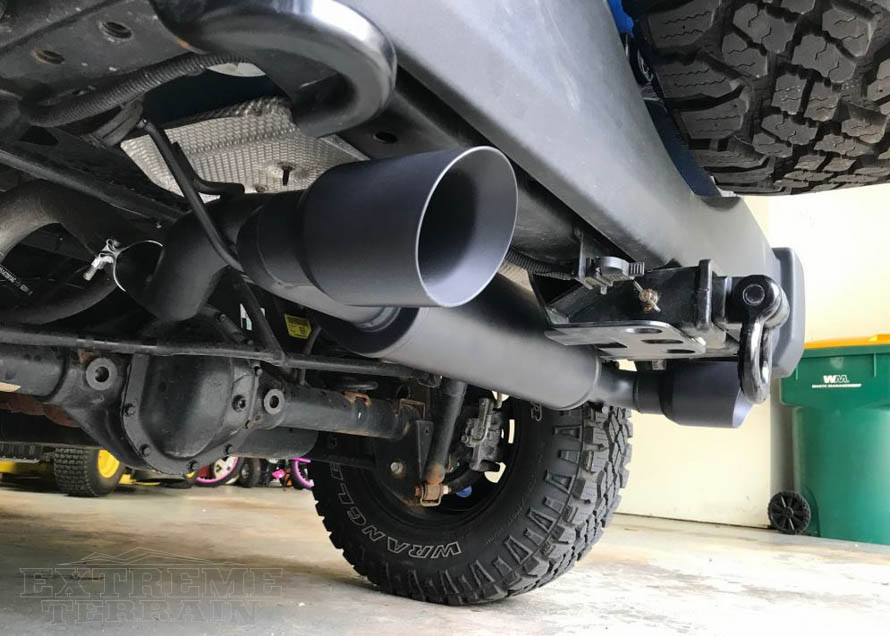When replacing such a small portion of the exhaust system it’s hard to imagine there could be different types. There are some key variances to take note of though. First and foremost is material.
As with most exhaust systems, you can find stainless steel and aluminized steel. Stainless is perfect for the Jeep way up north in the rust belt. Aluminized is great for guys outside the region, but not always. Let’s say you decided to pick up this system and you don’t expect the rest of the exhaust to live much longer. Aluminum is a good way to save yourself the money.
The exhaust can also split here. With cat-back exhausts, one can pick up a type that would convert the set up from a single-pipe exhaust to a dual. Usually, this happens at the muffler where a single inlet dual outlet muffler is used to split the exhaust.
It’s because of this that a dual rear exit and still be used with this type of exhaust.
Colors also vary here. Black exhaust tips are all the rage in today’s day and age. It’s only natural manufacturers would offer these kits with variant colors in exhaust tips. It is also worth noting that the whole kits can come in different finishes as well.
When comparing kits side by side you may notice that the mufflers all look relatively similar yet produce much different sounds. This is because the magic happens within the casing itself. The idea behind all mufflers is to manipulate the exhaust note. The way this is done can vary.
Chamber type mufflers contain a series of chambers that give the car a deep note without blowing your eardrums out. Absorptive mufflers may appear a little different than chamber type mufflers on the outside, but on the inside they are worlds apart. The exhaust can pass freely through the muffler.
On the walls of the muffler you would find packing materials that really dial in the note. These types are more free flowing, but are much louder. There are combination mufflers which land right in the middle of the road. It’s important to keep in mind each manufacturer has their own formulas for each type.
This means they will all have signature notes, meaning you will have to do your homework to ensure you get the sound you find best.


